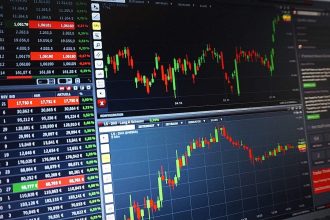Scams. Shady stocks. Worthless companies about to go bankrupt. These stereotypes are the impressions that most average investors have of the OTC markets. And because of them, few consider OTC stocks to be a worthwhile investment.
The truth is, there is so much more to this investing arena than meets the eye.
Most OTC stocks trade on the OTCQX or the OTCQB – both contain equities that are REQUIRED to meet specific financial and disclosure requirements. In fact, many companies that sell on these platforms are household names.
So what’s the difference between an OTC stock and a blue-chip? That’s a question we’ll explore further in this piece.
So… What are OTC Stocks?
OTC stocks trade via a dealer network as opposed to on a formal exchange like the NYSE or NASDAQ. Usually, OTC stocks are issued by smaller companies that don’t meet the listing requirements of a major exchange.
There are three main categories of OTC stocks:
OTCQX: The top tier of the OTC markets, reserved for established companies that meet certain financial and disclosure requirements. For instance, these firms must have 2-5 million USD in assets, have average annual revenues of 6 million USD, and have a market cap exceeding 10 million USD.
To list on the OTCQX, a company must be sponsored by a professional third-party advisor like an investment bank or law firm.
OTCQB: For many foreign companies looking to raise money in the US market, the costs and paperwork associated with OTCQX membership are too much to keep up with. Thankfully, the OTCQB offers a quality exchange at a much lower cost of money and time.
Unlike the OTCQX, there are no asset or revenue ceilings to break through. Instead, firms need only ensure that they are listed on a foreign exchange, meet a minimum bid price of $0.01, and regularly report to the SEC. Additionally, they must undergo an annual verification and management certification process.
Pink Sheets: The lowest tier of the OTC markets, where companies are not required to meet any financial or disclosure requirements. All a Pink Sheet security needs to do to list is file an initial application with the SEC, pay a $1,000 application fee, and shell out $5,000 for an annual listing fee. Because of this, we advise avoiding Pink OTC stocks.
What’s the Difference Between a Blue Chip and an OTC Stock?
The most significant difference between blue chips and OTC stocks is regulation. Remember, to list on a major exchange, a company must meet specific financial requirements and disclose information to the public regularly.
The requirements for OTC stocks are significantly lower. While OTCQX and OTCQB firms must regularly report to the SEC, the process is not as stringent as what blue chips go through.
A second (and obvious) difference – blue chips represent well-known corporations, while many OTC stocks represent far smaller companies. Occasionally, an OTC stock will rep a known foreign brand looking for stateside exposure, but this is an exception and not the rule.
Why Invest in the OTC Markets?
Forget the mainstream media stereotypes – the OTC markets offer several advantages for savvy investors.
First, because these stocks are not as well-known or regulated as blue chips, they tend to be much cheaper. This situation presents an excellent opportunity for value investors to get in on the ground floor.
Second, OTC stocks are often more volatile than blue chips, meaning more opportunity for profit (or, if you’re into shorting, losses). Look for stocks being “chummed up” on forums and proceed with caution.
Lastly, the OTC markets offer a great way to invest in foreign companies without dealing with the hassle of investing directly in foreign markets. With more innovation happening overseas these days, this is huge.
Yes – OTC Markets Carry Unique Downside Risks
While many risks associated with OTC stocks have been exaggerated, they are genuine. Apart from the lack of regulation (which we’ve already covered), the lack of liquidity is the biggest concern.
Since there are fewer buyers and sellers in the OTC markets, it can be challenging to find someone to take the other side of your trade. For this reason, be prepared to take more significant losses than anticipated when things go south.














